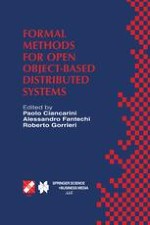Formal Methods for Open Object-Based Distributed Systems presents the leading edge in several related fields, specifically object-orientated programming, open distributed systems and formal methods for object-oriented systems. With increased support within industry regarding these areas, this book captures the most up-to-date information on the subject.
Many topics are discussed, including the following important areas: object-oriented design and programming; formal specification of distributed systems; open distributed platforms; types, interfaces and behaviour; formalisation of object-oriented methods.
This volume comprises the proceedings of the International Workshop on Formal Methods for Open Object-based Distributed Systems (FMOODS), sponsored by the International Federation for Information Processing (IFIP) which was held in Florence, Italy, in February 1999.
Formal Methods for Open Object-Based Distributed Systems is suitable as a secondary text for graduate-level courses in computer science and telecommunications, and as a reference for researchers and practitioners in industry, commerce and government.
